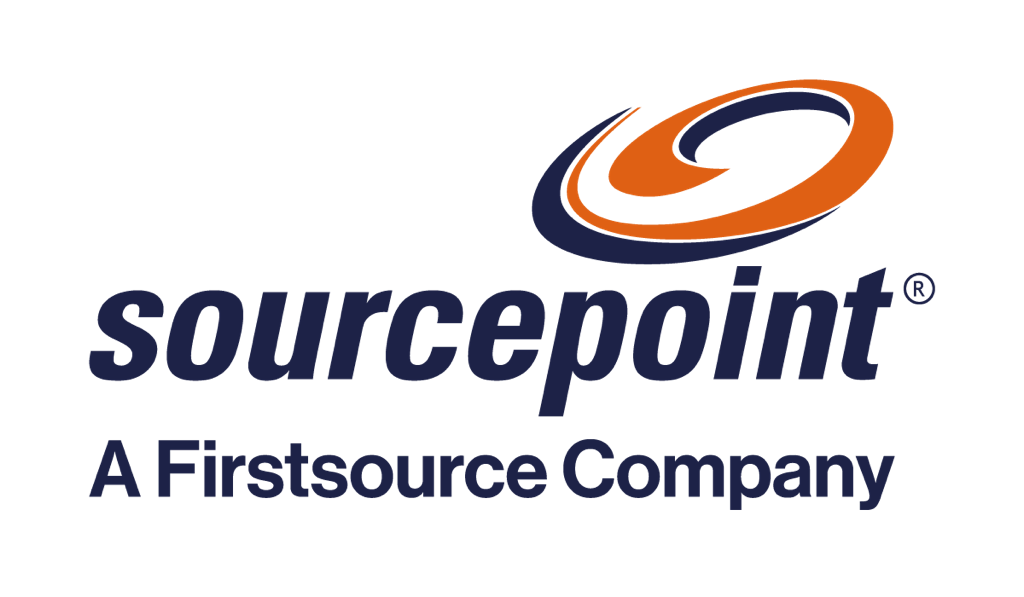Sundara Sukavanam, Head – Enterprise Transformation Office at Firstsource talks about how the pandemic has effected digital transformation success and lessons to take forward from successes and failures in this Silicon in Focus podcast.
Transcript
[00:00:02] Dave Howell: Welcome to the Silicon UK In Focus Podcast. Silicon UK is the leading source for IT news, analysis, features, and interviews, covering the technology that impacts your business. I’m your host, Dave Howell. Today we’re speaking with Sundara Sukavanam, the Head – Enterprise Transformation Officer for Firstsource. Firstsource helps their customer stay ahead of the technology curve with transformational technologies in the healthcare, banking, and communication sectors. Their digital-first digital now approach helps organizations reinvent operations and reimagine business models, enabling them to deliver moments that matter and build competitive advantage. Welcome, Sundara.
[00:00:39] Sundara Sukavanam: Thank you, Dave.
[00:00:40] Dave: Well, thanks for taking the time to come on today. I was very intrigued by an email which I was sent by I think your public relations people. You’re basically pitching something that talked about not digital transformation as we understand it, and there’s been a lot written about that and how that’s going to change the post COVID. Your take was, let’s talk about what these projects fail. My research indicated that happens more than you actually think. Before we get into that conversation, I want to get a bit of background. What were you doing before Firstsource, Sundara? What’s your career up to date, and what are your key responsibilities at Firstsource?
[00:01:17] Sundara: I’ve been in the industry for a little over 25 years, done various roles, from starting as a developer on a mainframe in a hierarchical database called Model to afford to moving to web-based applications and then large scale enterprise program implementations for very large IT majors as a group CIO. Then involved in large-scale transformation initiatives for customers across media, retail, manufacturing, energy, utilities, et cetera.
My strength and my learnings are, on one side, understanding what the demand looks like for transformation from enterprises that are willing to embark on a journey, and what the reality is, as a leader that’s gone through trying to do it for our own enterprise, that unique strength that I’ve built over the years. In Firstsource, my role is across five focus areas, and we call it the digital office because I truly believe the role is not about the person, the role is about the organization that’s coming together to drive change.
Those five areas are focused on automation and analytics, as integrated into how you deliver business operations. Platform-based services, can you orchestrate business processes using automated workflows and intelligence that’s built-in so that the chores of the daily job are taken away? Contact centers and how you can make them more modern, as in using digital technology for agent assist, use digital and deflection, and other technologies for better consumer experience.
The fourth is — none of this happens on an island. What kind of partnership ecosystem can you drive where there is collective success towards unified goals? Finally, the final piece, I think, is one that’s most often overlooked: the mindset. Can we change the mindset of an organization and the culture of our organization to think Digital First Digital Now? That, in a nutshell, is what I do.
[00:03:30] Dave: That’s quite a wide range, and I think all of that impacts massively on, I guess, our conversation today. I think all of those elements are clearly part of, I guess what digital transformation means as we define it today. I guess before we talk about, the meat of our conversation, why some projects do not achieve their goals, I’d really like to get your view on, where we are at the moment, you’ve had a massive experience of legacy systems and how digital transformation is evolved over time.
For you, where are we at the moment? I mean, clearly, we have to factor in the pandemic that’s impacting every business. For you, with that level of background and understanding, how much of an impact has the pandemic actually had on digital transformation or businesses literally redrawing their roadmaps to be very different companies in the future?
[00:04:23] Sundara: It’s obvious that the pandemic has forced companies to think differently about digital transformation. I think this big shift can be summarized into two or three key parameters. The first is digital transformation was often looked at as a long-term strategic program for an enterprise or a company. That’s changed. Gone are the days off, I’ll do a 36-month transformation program and then evaluate the benefits. That’s the first shift. The second shift is digital transformation was sometimes an inside-out program. What am I doing within the enterprise? Who owns it, who runs it?
Today, there’s a very clear mandate that’s driven by the pandemic that unless consumer experience and customers journeys are drastically changing to the benefit of the consumer, it’s not digital transformation. That’s the second shift. The third is the ability to pivot. You are going to find the need for agility, the need for flexibility, and the need for letting go of sunken costs and moving forward. Those are extremely critical if you want to be successful. A lot of this has changed the way enterprises and companies should look at digital transformation. The best ones that have succeeded have done all of this really well.
[00:05:47] Dave: Yes, I think they’ve done it at speed as you were mentioning in your first point. The acceleration of change has been well quite blinding, really. I think a lot of businesses were taken by surprise, and they want to move at that speed, but often they can’t. I think your last point is really intriguing. Are you saying that for businesses that move too slowly, that has to change, they have to change the speed of change, but more importantly, they may transform into a completely different business?
Often, that’s a very, very hard thing for some businesses to do because they may have decades of experience that we do it this way, but actually, they need to do it in a different way. Do you often find when you’re speaking to your clients that it’s that change of their mindset, their view, their attitude to change, that’s what needs to change, really? Not the tools, really, not the actual digital systems, it’s the people driving that change.
[00:06:41] Sundara: You’re spot on. Often, this is probably the most overlooked. Their focus on digital is typically on, “Let’s bring in this new platform, let’s build this new mobile app, let’s move stuff to the cloud,” but it’s not about that. I mean, it is all about that, but it’s not just about that. It’s about the mindset change that has to happen. The people that interface with your customers, with your patients, if you’re at a hospital, with your consumers, with B2B businesses, the people that do these interactions, the people that work with them, there’s a huge demand for a mindset shift without which none of this is going to happen.
That means your legacy way of thinking about how to interact with a customer, how to get the data, what kind of processes are set up. There might be 20,000 steps that a consumer might have to go through in order to get what he or she wants if it’s a personal loan, etc. Look at some of these new models that have come up like buy now, pay later. They’re just booming over the last 12 months to 18 months. Guess what? This was not a business model three years back. I think the shift in mindset and what that leads to as to what kind of a company will transform to are very real today.
[00:07:53] Dave: I think so. I guess the issue with leadership, with maybe more foresight, and being a flexible believer of a business and understanding how their businesses have to transform. If those are in place, then I think digital transformation strategy can be successful. I think it’s interesting that a lot of these strategies, they do not deliver what they expected them to, and some fail dismally for a few reasons, which I think we can maybe touch on today.
When you look at, I guess, the landscape of transformation and you look at the numbers of these projects which do fail, are there similar traits which underpin those failures? You see that time and time again, businesses are doing maybe something which they shouldn’t or they’re repeating their old ways. That’s what’s making their digital transformation projects fail. You can’t use your legacy to inform maybe the future. Is that really why these projects fail or is it something more fundamental than that?
[00:08:50] Sundara: We’ve done a little bit of work in trying to understand what’s going on in these projects. I don’t know whether it’s failure, but why do these projects seem to be never-ending?
[00:09:03] Dave: Yes, there’s no endgame. Yes, there’s no goal in place.
[00:09:07] Sundara: Correct. We’ve seen a few patterns. Number one, there is a traditional way of thinking about success, and that is we want to build X, Y, Z to solve a certain problem. The outcomes for that are defined in terms of maybe ROI, if you’re an enterprise. Outcomes are defined as increased revenue, reduced costs, increased productivity. Now, the point is, more often than not, enterprises have approached this with a fixed program plan, fixed accountability. Those structures mean that a function within an enterprise owns transformation. This function is often a horizontal that has to work with multiple business units and multiple other functions, so the traditional way of owning accountability doesn’t work anymore in an ecosystem where it’s a collaborative approach, where there is joint accountability, joint sponsorship, where the benefit realization might be different for each of the groups.
[00:10:11] Dave: Indeed. Yes.
[00:10:13] Sundara: The foundational thinking of a traditional program versus a digital program are very different. That’s one main reason why I’ve seen these programs struggle to find themselves successful.
[00:10:26] Dave: I think we can unpack that a little bit, can’t we? There’s a clear mismatch, I think, between traditional business, you mentioned ROI, that idea that we have this program, this will do this amount of work for us, and this will then either give us some advantage in the business or influence our bottom line. Now that linear approach kind of doesn’t work anymore. It has to be a multidimensional approach, which is completely business-wide. If you can take on board that idea, then I think your projects will move forward much quicker, they will have speed, they will have agility, and they will meet goals. It’s having that multidimensional approach, Isn’t it? That’s the change that needs to take place, isn’t it?
[00:11:07] Sundara: Correct. That multidimensional approach also drives this thinking that you’ve got to start looking at incremental benefits. It’s not about the big milestones in 6 months, 8 months, 12 months, but you start looking at incremental benefits. The KPIs that you measure as incremental benefits might be as simple as, A, is the net promoter score increasing for an employee?
Is your idea actually being received well? Is your idea actually not being received well in the minimum viable product that you rolled out so that you can immediately pivot and then switch on to something that you think will work better? I think looking at benefits as incremental benefits and not just unidimensional benefit as cost or revenue, often start to give you confidence as a program that you are moving in the right direction, and maybe you are moving– the direction is a little different, but you’re still moving forward.
[00:12:02] Dave: Do you also think that there’s, I guess, what I call an intangible element to all of these developments, particularly with a digital transformation? The pandemics has clearly shifted a lot of the power to consumers. That’s an interesting dynamic for our business trying to evolve forward. By intangibles, I guess what I’m talking about is that customer experience. How do you define that? What does that look like?
Often, it’s difficult to manage. It’s difficult to see that. It’s difficult to get the data to understand what a good customer experience looks like. Do you often find, when you’re speaking to your customer base, that that’s a clear element in their transformation plans, but it’s not quite in for them yet? They can’t quite understand how the intangible element is also essential, if they go and succeed with their digital transformation plans.
[00:12:54] Sundara: We often measure customer experience after the fact.
[00:12:58] Dave: Yes, we record customer service interviews, don’t we? or we look at something that’s happened on our website with our chatbot. As you say, that’s always after the fact, isn’t it? That’s always, the events that happened. We can’t do anything about that because it’s happened. It’s interesting that all of that information and data is legacy in effect. It’s interesting that the future, I guess, has to be real time. It has to be happening as those conversations are happening, isn’t it?
[00:13:25] Sundara: Yes, so to that point, the after-the-fact measurement is in form of a survey, is in the form of a call recording. I think the way today’s world works is there are technologies and tools available for real-time sentiment and speech analytics. I’ve seen digital programs focus on using these technologies to drive agent efficiency, because there’s a clear measure of ROI if the agent is going to spend less time trying to document a call. That’s good, that’s needed.
Using the technologies to understand real-time and using AI and machine learning to predict and prompt the agent that right now your customer is asking these questions he or she has browsed the web for cancellation office contract three times because we know that he or she has done this in the last two weeks. Giving the broader context to the agent at that point in time, that matters can change the way the agent interacts with the customer. The point is, when you are looking at driving better consumer experience, you cannot look at it after the fact, you got to look at it at that point in time, can we make a change? Can we make a prompt? That means your program has to start looking at past data, has to create some level of 360-degree view, not the entire story, but some level of 360-degree view, and pattern recognition that can give a prompt to the agent so that at that point in time, you make a visible difference to the interaction model. If you do that, you start seeing the results and you start seeing the perceptions of your interaction change from a customer point of view.
[00:15:12] Dave: Keep up to date with the latest tech news and read in-depth features by subscribing to the Silicon UK newsletter.
One of the key points you’d picked on that speaks to maybe why some of these plans are maybe successful and some do fail, but let’s just say a lot of them aren’t as successful as the business would like them to be. You mentioned the organizational readiness, that the business isn’t ready to take those plans forward. That’s an interesting point of view. that you have to be ready to make that change. I’ll be very interested to expand on that. Why a business would move forward if it wasn’t ready?
[00:15:49] Sundara: Organizational readiness is often a significant point in why digital transformations don’t go the way they want. This readiness is again on multiple dimensions. One is the majority of your organization’s in terms of technology adoption. It could be about; do you have teams to execute the vision that you’ve put together? Do you have the technology and infrastructure in place for you to execute the plans that you’ve put together?
Do you have a clear sponsorship structure and org design that can actually support such a large complex initiative that you’re undertaking? Have you worked on mindset grounds-up and top-down so that the people that are involved in this are ready mentally for a fail-fast approach? Organization readiness across all this, could lead to considerable disconnects, and too many early failures that are a setback even before the program becomes successful.
[00:16:45] Dave: I think that’s true. I guess the idea you can– I guess, innovative speed. Every business would like to be able to do that, but you have to have the foundation in place, it seems to me. That’s first, you need to audit your business. Have a look at the process that you have at the moment. Look at your partners, look at your workforce. Then have a look at the transformation you are trying to achieve and ask those difficult questions, are you ready to put those plans into place? If you aren’t, then maybe you take a step back. Maybe you take the time to fix those issues because clearly, if you don’t, then your transformation planning, it’s kind of handicapped from the first step because the business will not be able to move forward because it isn’t ready. That’s given, I think.
[00:17:25] Sundara: Let me put it this way. If I double-click on this a little bit, you need to have a broad strategy and a vision. If you are looking to modernize your mortgage servicing, then maybe you start looking at the different verticals. There’s the origination, there’s a post clause, there’s servicing, there’s potentially due diligence. The transformation story has to be about, I want to automate and improve my consumer experience, my borrow experience across this life cycle.
You might not be able to do all of that at the start, but can you break it up to say that I’m going to create a pattern of progress and I’m going to take bite-size chunks across origination, across servicing, across post-close, and say that I’m going to create a string of pearls. I’m not going to create the whole platform that might take 38 to 40 months for me to build, but can I build these strings of pearls and small transformation orchestration layers that then can be combined together to form an end-to-end loosely coupled architecture platform?
[00:18:29] Dave: I’m with you. You’re talking about, if you want your planning to be successful, then it’s small steps, isn’t it? It’s looking at the plan and breaking that down. Don’t try and do everything at once. Businesses, of course, want to. They have that need to transform very, very quickly because they’re in a competitive market or they see what’s happening elsewhere and they think we have to do this at a fast speed. We have to do this very quickly, but fundamentally, that’s a mistake, it seems to me, that you can easily end up with a project that just does not deliver what you wanted it to. I think what you are talking about is small steps, take each step in turn, and over time, they will build into the transformation you’re looking for.
[00:19:09] Sundara: Correct. That also helps you in ensuring that your organization is eventually ready for that speed that you want, almost like how the bamboo grows. The amount of groundwork that you do and after the six-week period, you start seeing the growth is phenomenally fast than what you saw in the first six to eight weeks. I think you need to start thinking about digital transformation similar to the foundational elements, keeping in mind that you can’t keep building the foundation forever. You got to validate that with small successes.
[00:19:41] Dave: Do you often find that? Actually, when you speak to companies which want to transform and they would like to transform at speed, they are hesitant. I know we’ve talked about planning and looking at your business and the foundations, but sometimes is that phase just too protracted? Do you often say to businesses, “Look, you’ve done the groundwork, now it’s time to actually pull the trigger and get on with the development”? Is it often the case that there’s an anxiety there to actually kick the project off because maybe they don’t feel confident that they have the foundation, correct? Is that often something that you see in business?
[00:20:14] Sundara: Yes, in fact, more often than not. This goes back to the traditional mindset, where you think that you have a plan and you know what you’re doing. In reality, the mindset shift to say that I will fail and the only way I can validate my plan is to do these incremental steps and see if that fails. If it succeeds, good. If it doesn’t, let me pivot. I think the desire to take two steps forward, keeping in mind that you might take one step back, has to be integrated into how you think about digital transformation. Otherwise, it’s not going to work.
[00:20:49] David: Absolutely not. I think it’s that business view that you must be prepared to fail. You must take that on board that some things will not work. I think you’ve already touched on that earlier in our conversation where if you are a number of months into a project and it’s clearly not working, you have to have the strength and the mindset to say, “Yes, that’s not working, we need to shift, we need to pivot, we need to do something else because that is not working,” but it has to be in place.
I guess that support mechanism. You can say that to your teams, “Look, if it doesn’t work, that’s not going to be something that’s going to be detrimental to you because we’ve built that into the plan.” I think often that idea about failure and the consequences of that often aren’t communicated, I don’t think, to the teams building this stuff. Often, that curtails their creativity because they’re a little bit worried about, if this doesn’t work, what’s going to happen?
[00:21:42] Sundara: Yes. With that, David, is the other aspect of, are you looking at the small successes that your teams are seeing? Are you amplifying those successes, because that is where your learning for closed looping might come from? There’s a POC or a pilot that’s going on, it’s not very significant, but that might be the answer to the problems that you’re facing because you’re thinking that this is the only way this interaction model can work. I think celebrating incremental success and looking for those across the program boundary, not just the core team is essential for digital transformation success.
[00:22:21] David: Yes. That feeds in beautifully with something else, which you’d pointed out, which hadn’t occurred to me: that for these kinds of projects to be successful, the people that are running them, the business leaders and maybe even managers, they have to take on dissenting opinions. They have to say to their workforce, “We’re going to do this program, don’t be afraid to criticize the plan. What do you think is wrong with it?” I think that’s a very interesting state of affairs with business because often, as we’ve said earlier, it’s often businesses are led from above and direction is given and that’s carried out.
These kinds of dissenting voices and then dissenting opinions often aren’t heard. It seems to me that if at all, and they point out something that maybe hasn’t been seen by [unintelligible 00:23:06] maybe built the original strategy or the plan, that could save you a lot of time and potentially lots of money by not going down a certain route, often dissenting opinions unheard early.
[00:23:17] Sundara: In fact, this, again, is extraordinarily critical. This goes back to the mindset shift from the top. The key question I asked my core team is, why would this fail? Why would this fail seems like a broad-based question but then it forces the team to go to their teams and say, “What’s not right about what we’re doing?” More often than not, just the tone that is set at the top and that translating into a smaller question at each level gives the ecosystem the confidence that I can raise my voice and point out, “This is not right. There’s an alternate approach to this.” More often than not, hearing dissenting opinions is not about trying to create opposing forces, but it’s trying to arrive at the right answer.
[00:24:04] David: Is it often a difficult balancing act, though, because a dissenting voice can often be confrontational, can’t it? Sometimes in business, those kinds of confrontations never end well. Of course, when you’re trying to build maybe some innovation within your business, you certainly don’t want that kind of conflict. Is it quite difficult to move a dissenting voice away from conflict, but towards more collaboration?
[00:24:30] Sundara: Yes. In fact, this could become a much, much, much larger program in itself because you could connect this to the organization culture, empowerment, and everything else. It’s tough. It’s extremely tough.
[00:24:42] David: We can talk about this stuff all day, but actually implementing it is not so easy.
[00:24:48] Sundara: The simple way is, when you start creating these opinions as outcomes of conversations, then you disassociate the opinion with the person that’s raising it. The minute you take the opinion away from a person and make it about a problem, maybe the acceptance is much better. Then the patterns start to emerge. It’s extremely tough, but I think it’s an extraordinarily important piece, and more so in the early stages of programs so that you can pivot before you go too deep in one direction.
[00:25:23] David: I think that’s amazing. That’s interesting, I guess, decoupling an idea from a person. Actually, the idea becomes owned by the entire business. “We’re in this together”, that phrase. It’s our business and we all have a stake in this. We’re all stakeholders. Having that, I guess that empowerment, that word again, that empowerment of everyone to have a valid opinion, which will be listened to, that seems to me to be a massive asset, which is often really not used a great deal within the business. That’s something I think, in a lot of the transformation projects has to be the core of what that transformation project is, moving that idea forward and making it business-wide.
[00:26:03] Sundara: I think this in some ways goes back to the sponsorship and budgeting. Just because the digital transformation program is a collaborative organization-wide effort doesn’t mean there’s distributed accountability. There has to be very clear accountability that also means empowerment. The sponsorship and the budgeting, and the ability to make decisions have to be driven with very clear boundaries. I’ve seen more often than not, because these programs are across five different functions, every function has its priorities and so this becomes another program on their list. The prioritization has to be well defined, the accountability and central ownership of the budget and decision making has to be well defined. When that happens, things start to move in the right direction.
[00:26:54] David: Absolutely, they do. One thing I always like to ask everyone on these podcasts is someone listening to this, for instance, if this is one thing, they take away that they say, “Listen to this podcast, and then go and do this,” what would that be?
[00:27:07] Sundara: The key takeaway would be to look at the objectives of what you’re trying to do and see if those objectives can be broken down to very simple measures of success. If those measures of success are not related to either direct consumer experience in bottom-line growth, then question the program. I think that’s the first takeaway. These digital transformation programs are not hobby projects. These programs have to drive benefit. What is the objective? Is there a direct correlation between the objective and the measures that I’ve put together? Can you establish those connects because when you do that, then you can break it down into smaller incremental chunks, and run these programs better?
[00:28:01] David: I guess in closing, what do you think the future of digital transformation looks like? We’ve covered a lot of ground in this podcast but do you think fundamentally, in the future digital transformation will look very different thing to businesses, they’ll redefine what that actually means? I’m not talking post-COVID, clearly, that’s an element, but I’m thinking maybe more long-term than that. If we had this conversation in a few years’ time, do you think digital transformation as we define it in the future will be very, very different to what we define it today?
[00:28:31] Sundara: Let me put it this way. In a few years from now, I don’t think the digital transformation will be the topic of discussion, because this has changed the business and this is going to become the only way we operate businesses. What I mean by that is the speed at which newer technologies are evolving, digital transformation should not, and in many ways, we’re seeing semblances of that. It’s not treated as a separate program. This is the only way we do business.
What is futuristic in terms of trying out new technologies maybe becomes the garage, but what goes into production as a program that we try out becomes the mainstream of what the business does, because the consumer patterns, the behavior patterns, the expectations are changing so drastically that you cannot run digital transformation as a separate program. It has to become integral to the way you run your business.
That means you’re going to start looking for distributed workforce as the norm, distributed consumption as the norm, on-time, on-demand ability to interact with your consumers based on their need and their choice becomes the norm, and the technologies that are evolving to make all of this better cannot sit outside of the functions that run it. Digital transformation and incubation of newer technology and trying it out failing, learning, growing have to become integral to how our business runs.
[00:30:08] Sundara: You’ve been listening to Silicon UK in Focus Podcast. Keep up to date with the latest news and read in-depth features by subscribing to our newsletter. I’d like to thank David for taking the time to speak to Silicon UK. It’s goodbye from me, Dave Howell, and it’s goodbye from Sundara.
[00:30:22] David: Thank you, Sundara. Amazing conversation. Glad to be here. Thank you.










